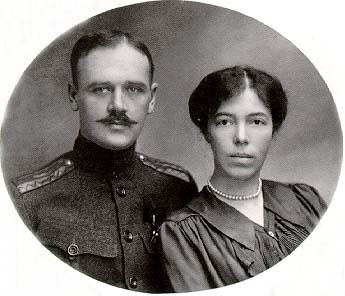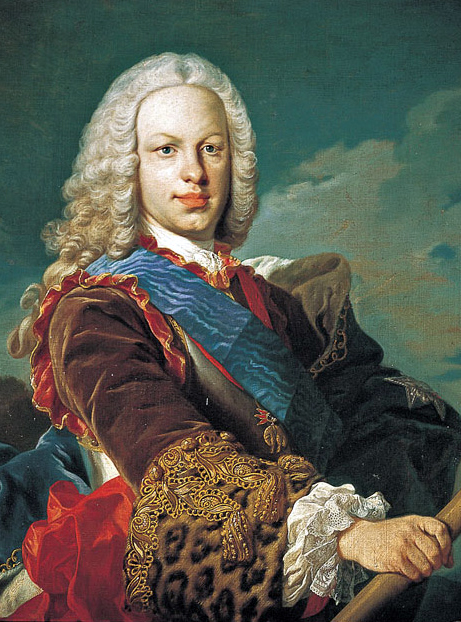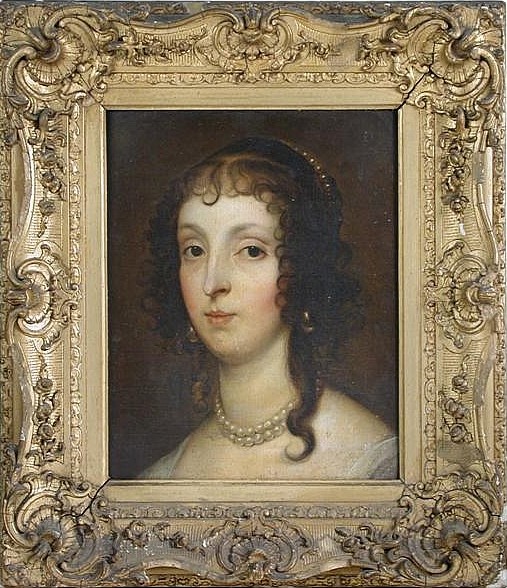© Unofficial Royalty 2024

Prince Heinrich of Prussia; Credit – Wikipedia
August 14, 1473 – Birth of Margaret Pole, 8th Countess of Salisbury, daughter of George, Duke of Clarence (third son of Richard Plantagenet, 3rd Duke of York) and niece of King Edward IV and King Richard III, at Farleigh Hungerford Castle in Somerset, England
Margaret was one of the few surviving members of the Plantagenet dynasty after the Wars of the Roses. She was the mother of Reginald Pole, Cardinal, Papal Legate, and last Roman Catholic Archbishop of Canterbury during the reign of Queen Mary I. After the rise of the Tudors, the remaining members of the House of York were systematically dealt with through marriage, imprisonment, and eventually, execution. Accused of conducting treasonable correspondence with her son Cardinal Pole, Margaret was executed during the reign of King Henry VIII.
Unofficial Royalty: Margaret Pole, 8th Countess of Salisbury
August 14, 1479 – Birth of Catherine of York, Countess of Devon, daughter of King Edward IV of England, at Eltham Palace in London, England
In 1495, sixteen-year-old Catherine married twenty-year-old William Courtenay, son and heir of Edward Courtenay, 1st Earl of Devon, a strong supporter of the then-current monarch, King Henry VII, and they had three children. After her marriage, Catherine remained close to her eldest sister Elizabeth of York, wife of King Henry VII. She attended the wedding of her eldest nephew Arthur, Prince of Wales and Catherine of Aragon in November 1501, and the betrothal of her eldest niece Margaret Tudor to James IV, King of Scots in January 1502. After the death of her husband in 1511, Catherine took a vow of celibacy and was rarely at court. One of her few appearances at court was in 1516 for the christening of her great-niece, Henry VIII and Catherine of Aragon’s daughter, the future Queen Mary I of England, at which Catherine was the godmother. Catherine of York died on November 15, 1527, at Tiverton Castle in Tiverton, Devon, England, aged 48.
Unofficial Royalty: Catherine of York, Countess of Devon
August 14, 1687 – Birth of Johan Willem Friso, Prince of Orange in Dessau, Principality of Anhalt-Dessau, now in Saxony-Anhalt, Germany
At the time of Johan Willem Friso’s birth, his first cousin once removed Willem III was Prince of Orange and Stadtholder (Governor) of five of the seven provinces of the Dutch Republic. Willem III had married his English first cousin Mary Stuart, the elder surviving child of King James II of England. After the Glorious Revolution of 1688 which deposed King James II, Willem and Mary jointly ruled England as King William III and Queen Mary II, but the couple had no children. After Willem’s death, Johan Willem Friso claimed succession in the five provinces of the Dutch Republic that William (Willem) III had held as well as to the title Prince of Orange. However, the five provinces over which Willem III had ruled as Stadtholder all suspended the office of Stadtholder after his death. A dispute arose between Johan Willem Friso and Friedrich I, King in Prussia, also a grandson of Frederik Hendrik, Prince of Orange, over the Principality of Orange, located in France. Friedrich I eventually inherited the land and ceded the land to France in 1713. However, the title Prince of Orange continued to be used in the Dutch Republic. In July, Johan Willem Friso went to The Hague to meet with King Friedrich I of Prussia about their succession dispute. To cross the Hollands Diep, a wide river in the Netherlands, Johan Willem Friso and his carriage traveled on a ferry. The captain had trouble with the sails and suddenly a great gust of wind filled the sails, the ferry capsized and Johan Willem Friso drowned at the age of 23 on July 14, 1711. His body was found floating in the river eight days later.
Unofficial Royalty: Johan Willem Friso, Prince of Orange
August 14, 1688 – Birth of Friedrich Wilhelm I, King of Prussia, in Berlin, Kingdom of Prussia, now in Brandenburg, Germany
For the first few years of his life, Friedrich Wilhelm was raised in Hanover, at the court of his grandmother, the Electress Sophia of Hanover, along with his cousins – his future wife, Sophie Dorothea of Hanover, whom he married in 1706, and her brother, the future King George II of Great Britain. Friedrich Wilhelm came to the Prussian throne upon his father’s death in 1713. Unlike his father who viewed the treasury as his own money and lived a lavish lifestyle, Friedrich Wilhelm chose to go the opposite direction. He sold many of his father’s possessions and lived an austere life. While his father was focused more on his personal enjoyment, Friedrich Wilhelm focused on strengthening Prussia, particularly the economy and the military.
Unofficial Royalty: Friedrich Wilhelm I, King of Prussia
August 14, 1720 – Birth of Friedrich II, Landgrave of Hesse-Kassel, husband of Princess Mary of Great Britain (daughter of King George II of Great Britain), in Kassel in the Landgraviate of Hesse-Kassel, now in Hesse, Germany
Friedrich II, Landgrave of Hesse-Kassel became famous during the American Revolution as a supplier of thousands of Hessian soldiers who fought on behalf of the British. Friedrich and his wife Mary are ancestors of the current British royal family through their fourth son Prince Friedrich. Prince Friedrich’s daughter Augusta was the grandmother of Princess Victoria Mary of Teck, better known as Queen Mary, the wife of King George V of the United Kingdom. Through their third son Prince Karl, Friedrich and Mary are great-grandparents of King Christian IX of Denmark. Through King Christian IX, Friedrich and Mary are ancestors of six of the ten current European royal families.
Unofficial Royalty: Friedrich II, Landgrave of Hesse-Kassel
August 14, 1754 – Death of Maria Anna of Austria, Queen of Portugal, wife of King João V of Portugal, in Lisbon, Portugal; initially interred at the Monastery of São João Nepomuceno (Saint John Nepomuk), which she founded, her heart was interred in the Imperial Crypt at the Capuchin Church in Vienna, Austria, the burial place of her birth family, the Habsburgs. In 1855, her remains were transferred to the Royal Pantheon of the House of Braganza at the Monastery of São Vicente de Fora in Lisbon, Portugal, where her husband João V had been interred.
Maria Anna, the daughter of Leopold I, Holy Roman Emperor, was the wife and first cousin of João V, King of Portugal. Maria Anna and João V had six children including two kings of Portugal. Soon after her marriage, Maria Anna realized that beauty and luxury were valued at the Portuguese court much more than learning and knowledge, which were the traits valued at the Austrian court. João had many mistresses and several illegitimate children and although he was well educated and religious, he occupied himself with whatever pleased him at the moment. Maria Anna died four years after the death of her husband.
Unofficial Royalty: Maria Anna of Austria, Queen of Portugal
August 14, 1862 – Birth of Prince Heinrich of Prussia, son of Friedrich III, German Emperor, at Neues Palais in Potsdam, Kingdom of Prussia, now in Brandenburg, Germany
Full name: Albert Wilhelm Heinrich
Prince Heinrich was the son of Victoria, Princess Royal and Friedrich III, German Emperor, and Queen Victoria’s grandson. He married his first cousin Princess Irene of Hesse and by Rhine, daughter of Princess Alice of the United Kingdom. Unfortunately, Irene was a hemophilia carrier having inherited the gene from her mother Princess Alice who had inherited it from her mother Queen Victoria. Nine of Queen Victoria’s descendants were afflicted with hemophilia and two of them were Heinrich and Irene’s sons. At the age of 15, Heinrich started his career in the German Imperial Navy. In 1909, he was promoted to Grand Admiral (Großadmiral), the highest rank in the German Imperial Navy. At the beginning of World War I, Heinrich was appointed Commander-in-Chief of the Baltic Fleet. He was charged with preventing the Russian Navy from attacking the German coast and was successful. At the end of World War I, and with the abdication of his brother Wilhelm as German Emperor and King of Prussia, Heinrich left the navy. After the dissolution of the German monarchies, Heinrich and his family lived at Hemmelmark, an estate in Eckernförde in Schleswig-Holstein, Germany, where he died at the age of 66, on April 20, 1929.
Unofficial Royalty: Prince Heinrich of Prussia
August 14, 1876 – Birth of King Alexander I of Serbia in Belgrade, Serbia
King Alexander I of Serbia was the last ruler of Serbia from the House of Obrenović. His reign ended with his and his wife’s brutal assassinations in 1903. He was the only surviving child of King Milan I of Serbia and his wife Natalija Keschko. In 1889, King Milan unexpectedly abdicated in favor of his twelve-year-old son who became King Alexander I of Serbia. In 1893, 17-year-old King Alexander proclaimed himself of age and dismissed the regency council to take royal authority for himself. The following year, King Alexander abolished the 1889 liberal constitution and restored the former conservative 1869 constitution. The political situation continued to worsen until the army had enough. The military organized a conspiracy, the May Coup, to replace King Alexander I of the House of Obrenović with Prince Peter Karađorđević of the rival House of Karađorđević. This resulted in the assassination of Alexander and his wife.
Unofficial Royalty: King Alexander I of Serbia
This article is the intellectual property of Unofficial Royalty and is NOT TO BE COPIED, EDITED, OR POSTED IN ANY FORM ON ANOTHER WEBSITE under any circumstances. It is permissible to use a link that directs to Unofficial Royalty.

















